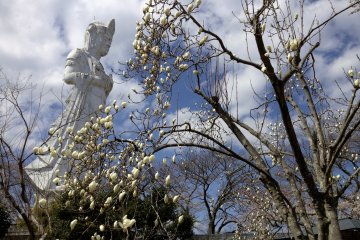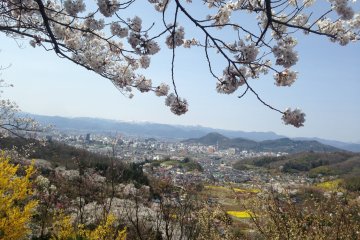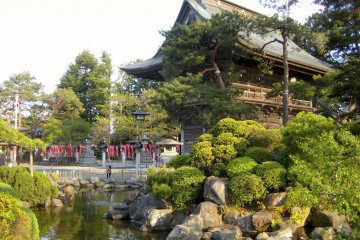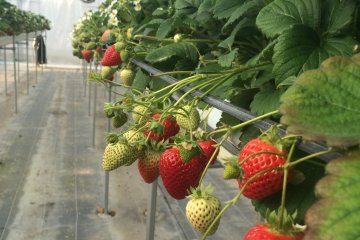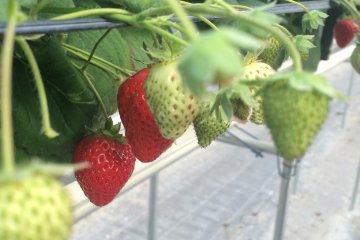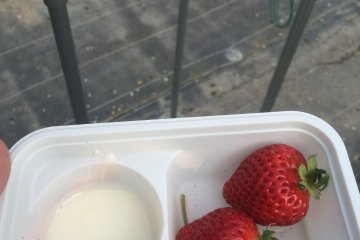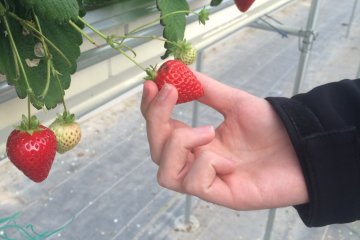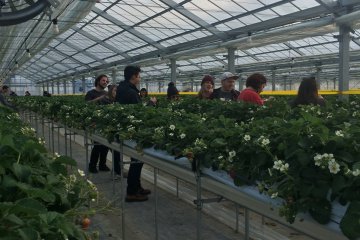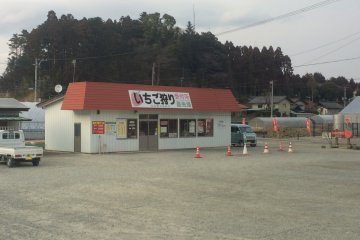On March 11, 2011, visitors at the Wada Strawberry Tourism Association were enjoying strawberry picking when the earthquake struck. Everyone was immediately sent home, and an hour later 6 feet of sea water swept through, destroying everything in its path. Five years later, the plump strawberries sell out in an hour and the air is filled with chattering voices and sticky fingers smeared with strawberry juice and condensed milk.
I visited the Wada Strawberry Tourism Association less than 2 weeks before the fifth anniversary since the earthquake, tsunami and nuclear disaster in 2011. Just past the small shop selling strawberries, jams, and other goods are rows of clear plastic greenhouses. We were guided to a greenhouse near the center and was handed a plastic tray with a divider to separate my discarded strawberry tops and the complimentary condensed milk for dipping the strawberries.
Prior to the accident, visitors had to stoop to pick strawberries from the ground and dust off the dirt. However, one of the interesting features of the new farm is the implementation of planters and ground coconut to grow the strawberries instead of soil. This change was brought about due to worry about the distance to the nuclear power plant, despite the assurance that the soil had been deemed uncontaminated. This has become one of the selling points of the farm, making it easier for kids and adults alike to pick clean, easy-to-reach strawberries.
As much as I enjoyed eating more delicious strawberries than I should have, I was also intrigued by the story and perseverance of all the people who run the Wada Strawberry Tourism Association. When the tsunami wiped out half of their crops, they distributed the remaining half located on the hillside to refugees in the following weeks.
In the year after the disaster, volunteers from all over Japan flocked to the area to help clean up the destruction. Encouraged by their assistance, the Wada Strawberry Tourism Association decided to rebuild a year later. Despite the sharp decrease in the number of their customers, they worked hard to figure out ways to encourage customers to return and brainstormed ways to show the community that their agricultural products are safe.
In the years since the disaster, their customers have been steadily returning. While the numbers are not back to the way they were prior to the disaster, they expect to achieve those numbers by next year. Even now, their strawberries sell out within an hour. What sets them apart from strawberries sold in stores, besides the ideal conditions of the location, is that the strawberries are packed when they are most ripe, while stores generally sell strawberries a few days before they are at their best.
I personally enjoyed my time at Wada Strawberry Tourism Association, even if I did eat too much. The strawberries were absolutely incredible and the farm is careful to alternate the greenhouses and rows of of strawberries so there is always fresh strawberries available to pick. While you can't pick strawberries to take them home, you can buy strawberries in their shop by the parking lot.
For those looking for a little bit more than just strawberries, there are BBQ pits available to rent from 11am to 4pm for 500 yen per person for 90 minutes. If you can't be troubled to bring your own food, they have sets available for 1,100 yen per person (minimum of four people) which includes pork, lamb and vegetables. You do need a reservation, which can be made up until the day before.
The price for all-you-can-eat strawberry picking depends on the season, but only ranges from 900 yen to 1,400 yen (half price for elementary school kids and younger). Strawberry picking is available from January 17th until the end of May, with January being the prime season (for 1,400 yen) to May (for 900 yen). Group rates are available for groups over 25 people.




